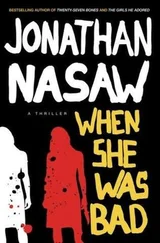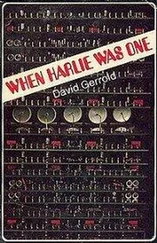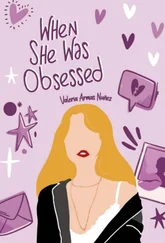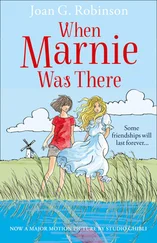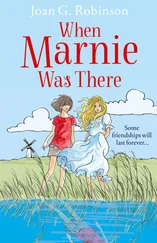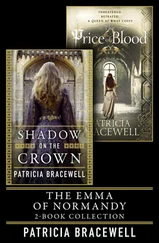There is a common social impulse to witness spectacle, and, equally importantly, a desire to experience that frisson of excitement, shock or fear that accompanies the moment when the predictable passage of daily events is suddenly converted into drama by the occurrence of extreme behaviour. From a scuffle in the street to a major disaster, these moments of transition disrupt our sense of security and our perception of the world. To be present in the vicinity of such a disruption is to experience the adrenaline rush of confusion and fear we instinctively generate to protect ourselves. And to witness those same occasions in their mediated form is to experience all of their drama, but with none of the personal danger. We absorb the atmosphere of spectacle as a kind of narrative – a fact that has been well illustrated, in photographic terms, by Weegee’s stark images of life and death ‘as it happened’ on the streets of New York.
Through modern media we can pick out the soft centres, as it were, of heightened emotions and volatile situations. We can all become members of an invisible audience, the legitimacy of whose presence is morally and ethnically ambiguous. But whether we authorize our consumption of mediated events in the name of public interest and reportage, or whether we argue the fine line between voyeurism and documentary, we require, above all, that the occasions of disruption that comprise our sense of spectacle are authentic – ‘authenticity’ is the hallmark of truth, and hence the gauge of social value.
Today, authenticity as spectacle has become the Holy Grail of contemporary culture, the unifying style by which the zeitgeist is seen to be made articulate. From the gritty pop realism and boiled-beef brutalism of geezer fiction and Britflicks, to the interactive scenarios of third-person video games such as ‘Metal Gear Solid’ or ‘Silent Hill’ – in which media techniques of truthfulness are used to heighten action, control and suspense – there is now the sense that authenticity itself can be sculpted to suggest veracity as an image, in which truth remains ambiguous. This is not a marginalized creative form: the reshaping of current affairs programming to convey immediacy has been matched by the rise of broadsheet columnists recounting their personal lives as contemporary fables, embracing the breadth of the human condition.
But nowhere has this trend been more pervasive, and the issue of veracity more contested, than within the wake of ‘popular factual programming’: a genre which links the ‘authenticity’ of docu-soap and docu-drama to the studio-based spectacle of conflict of ‘The Jerry Springer Show’ or ‘Vanessa’. As a cultural phenomenon, popular factual programme-making – and its impact on television, advertising and commentary – can be seen as the defining spirit of the 1990s: how do we mediate ourselves and who defines the mediation?
Back in the mid-1970s, television barely understood that programmes could be made by simply filming volatile ‘real life’ domestic and civic situations, and rely entirely on flashpoints of confrontation to hold the attention of the viewers. Televised conflict, beyond the sphere of current affairs, was a rarity, and the occasions on which the medium had been challenged by circumstances beyond its control – as it had with the Sex Pistols – were regarded as memorable. When the dramatist and critic Kenneth Tynan became the first man to say ‘fuck’ on television, during a debate over censorship on Ned Sherrin’s ‘BBC3’, on 13 November 1965, he remarked that he would probably be remembered only for that incident. And the (now forgotten) fact that he had used the word within a dry academic discussion about an audience’s relationship with language was an irony that failed to save him from being branded, immediately, as ‘the man who said “fuck” on television’. What sealed his reputation was the objectivity of the medium: we actually saw him say it – our sense of stability had been challenged, and an evolutionary stage in the potency of television had been defined.
In 1974, a further defining moment in the evolution of TV took place when the BBC made a successful excursion into filming a factual series – regarded at the time as a radical experiment – about the daily life of a British family. In so doing, they discovered not only the power of the hand-held camera and the fly-on-the-wall point of view to convey tension and intimacy, but also the allure of authenticity. Paul Watson’s series ‘The Family’ was greeted by some critics with incredulity and distaste – how could a film about daily domestic routine, with no specific subject or story, possibly hold anyone’s attention? But the public proved the pundits wrong, and tuned in by the million to watch the volatility of a low-income, working family. Thus a template was established – already sketched out by the soft sociology of ‘kitchen-sink’ cinema – that authenticity was synonymous with dysfunctionalism.
The route to authenticity – or, more cynically, the allure of mass-voyeurism – lay in the simple televisual device of apparently removing the fourth wall of a person’s room and thus laying bare his or her privacy. By this means, a compelling sense of risk – absent in scripted soaps – was written into the TV format, answering our need for authenticity and spectacle.
Previously, such subject matter – ordinary British life – had been the highly politicized terrain of ground-breaking documentary directors like Humphrey Jennings, whose films, such as Listen to Britain (1942), would prompt the young left-wing film director Lindsay Anderson to pass an assessment of British cinema in 1957 which predicted the vogue for today’s popular factual television but assumed, wrongly, that social conscience and the rights of the individual would take priority over mere sensationalism and ritual humiliation: ‘I want to make people – ordinary people, not just top people – feel their dignity and their importance. The cinema is an industry, but it is something else as well: it is a means of making connections. Now this makes it peculiarly relevant to the problem of community – the need for a sense of belonging together. I want a Britain in which the cinema can be respected and understood by everybody, as an essential part of the creative life of the community.
What Anderson regarded as the ordinary person’s right to importance and significance as a subject for documentary – ‘the creative treatment of actuality’, as he cited from documentarist John Grierson – has now become what the Sex Pistols once described as ‘a cheap holiday in other people’s misery’. In the Nineties, following on from the success of such docu-soap series as ‘Hotel’, ‘Airport’, ‘Pleasure Beach’ and ‘The Cruise’, TV companies fell over themselves to combine the phenomenal appeal of ‘real’ characters (Jane McDonald from ‘The Cruise’ has now presented ‘The National Lottery Live’, published her autobiography and played at the London Palladium) with the moments of conflict that typify the format of daytime-TV studio debates (or ‘studio rage’ as it has been called). Fact, not only stranger than fiction, was perceived to be stronger, even if one ITC report opined that popular factual programming was pandering to ‘the worst of human behaviour’.
As docu-soap and conflict television both scored impressive ratings, the fusion of the two forms has come to revolutionize the programming schedules: one Friday evening’s viewing on ITV in April 1999 ran as follows: ‘Parking Wars’, ‘Motorway Life’, ‘Family Feud’ and ‘Neighbours from Hell’. Even the BBC’s Business Unit got sexy with a docu-soap drama about company merge, ‘Blood on the Carpet’. On cable, Sky TV has given us the hugely successful ‘Ibiza Uncovered’ and myriad half-hour shows – ‘Tango Tango’, ‘Police, Action, Camera’ and ‘America’s Dumbest Criminals’ – which edits chunks of CCTV and surveillance video into a kind of ‘You’ve been Framed’ (or ‘You’ve been Arrested’) by the emergency services.
Читать дальше


